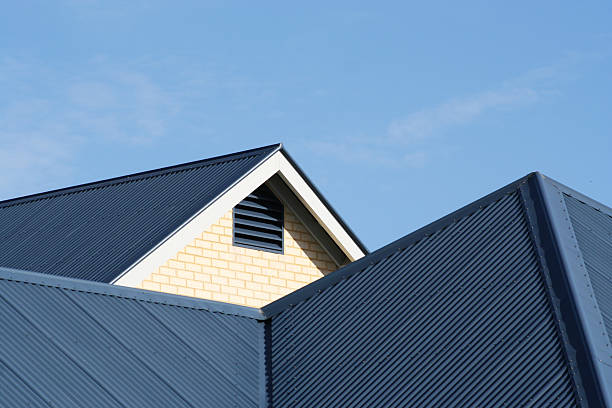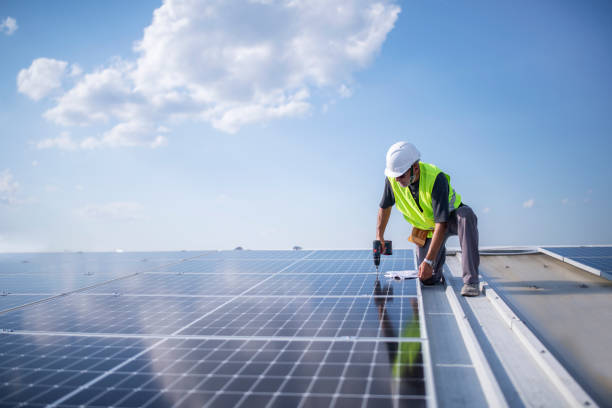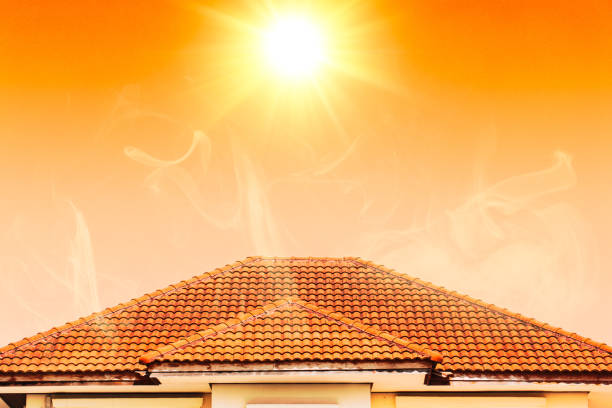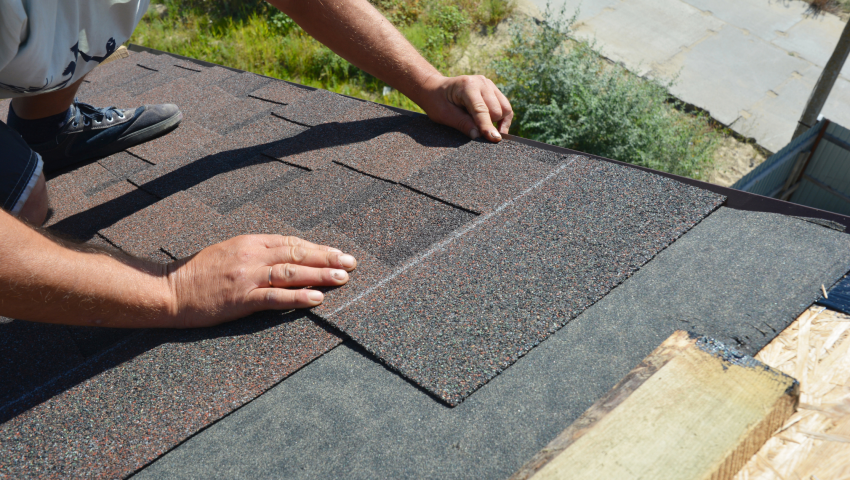Roofs play a crucial role in protecting our buildings and ensuring their structural integrity. But did you know that there are different types of roofs, each with its own unique characteristics and benefits? Whether you’re a homeowner or a business owner, understanding these roof types can help you make informed decisions about your roofing needs.
From the classic gable roof to the sleek flat roof and from the traditional hip roofs to the charming saltbox roofs, there is a wide range of options available. Each roof type has its own distinct shape and style, catering to different architectural preferences and weather conditions.
At Peak to Peak Roofing, we specialize in installing various roof types, including metal shingles and wood shingles, tailored to your specific requirements. Whether you need dormer windows or a valley roof, we’ve got you covered.
So whether you’re looking to replace an existing roof or embark on a new construction project, let us guide you through the different types of roofs.
Different Roofing Materials and Designs

Roofing materials are a critical factor in determining both the durability and aesthetics of your roof. With a wide range of options available, it’s essential to choose the right roofing material that suits your needs and preferences. Let’s explore some popular choices.
Asphalt Shingles
Asphalt shingles are the most commonly used roofing material due to their affordability, versatility, and ease of installation. They come in various colors and styles, making them suitable for different architectural designs. Asphalt shingles provide good protection against weather elements such as rain and wind.
Metal Roofing
Metal roofing material has gained popularity in recent years due to its exceptional durability and longevity. When considering roofing options, it’s important to weigh the pros and cons of different square-foot materials. They can withstand harsh weather conditions, like heavy rain or snowfall, without sustaining damage.
Metal roofs are also fire-resistant, making them an excellent choice for areas prone to wildfires. Moreover, they offer energy efficiency benefits by reflecting sunlight and reducing cooling costs.
Clay Tiles
Clay tiles are renowned for their classic appearance and ability to enhance the aesthetic appeal of any home. These durable tiles can withstand extreme temperatures and provide excellent insulation properties. However, clay tile roofs require professional installation due to their weight, which may increase overall construction costs.
Slate
Slate is a natural stone that offers unmatched elegance and beauty to any roof design. It is highly durable, fire-resistant, and can last for over a century with proper maintenance. While slate roofs can be expensive upfront, they provide long-term value by requiring minimal repairs or replacements over time.
Wood Shingles/Shakes
Wood shingles or shakes add a rustic charm to homes while providing decent insulation properties. They are typically made from cedar or redwood and offer natural resistance against insects and UV rays. However, wood shingles may require regular maintenance to prevent issues such as rotting or moss growth.
Green Roofs
Green roofs, also known as living roofs, are an eco-friendly option that involves covering the roof surface with vegetation. They offer numerous benefits, including improved insulation, reduced stormwater runoff, and enhanced air quality. Green roofs can be extensive (with lightweight plants) or intensive (with a deeper soil layer for larger plants).
Solar Shingles

Solar shingles combine the functionality of solar panels with the appearance of traditional roofing materials. These innovative shingles harness solar energy to generate electricity while seamlessly blending into the overall roof design. While they may have a higher upfront cost, solar shingles can significantly reduce energy bills over time.
Exploring the Pros and Cons of Various Roofing Materials
Asphalt Shingles
Asphalt shingles are a popular choice for many homeowners due to their affordability and ease of installation. They come in a variety of colors and styles, making it easy to find an option that suits your home’s aesthetic.
However, it’s important to note that asphalt shingles may have a shorter lifespan compared to other roofing materials. They can be more susceptible to damage from extreme weather conditions such as hail or strong winds.
Pros:
- Affordable: Asphalt shingles are one of the most cost-effective options for roofing materials.
- Easy Installation: Their lightweight nature makes them easier and quicker to install compared to heavier materials.
Cons:
- Shorter Lifespan: While asphalt shingles can last anywhere from 15 to 30 years, they generally have a shorter lifespan compared to other materials like metal or slate.
- Vulnerable to Weather Damage: Extreme weather conditions can cause asphalt shingles to become damaged or dislodged.
Metal Roofing
Metal roofing has gained popularity in recent years due to its durability and energy efficiency. It is known for its ability to withstand harsh weather conditions, including heavy snowfall. While metal roofs may have a higher initial cost than asphalt shingles, they often prove to be a worthwhile investment in the long run.
Pros:
- Durability: Metal roofs are highly resistant to fire, rot, insects, and mildew.
- Energy-efficient: They reflect heat from the sun, reducing cooling costs during hot summer months.
Cons:
- Higher Initial Cost: Metal roofing materials tend to be more expensive upfront compared to other options like asphalt shingles.
- Noise Factor: During heavy rain or hailstorms, metal roofs can produce more noise compared to other roofing materials.
Clay Tiles
Clay tiles are renowned for their classic appearance and exceptional longevity. They offer excellent protection against fire and can withstand high winds. However, it’s important to consider the weight of clay tiles, as they may require additional structural support.
Pros:
- Fire-Resistant: Clay tiles are highly resistant to fire, making them a safe choice for homeowners.
- Longevity: With proper maintenance, clay tile roofs can last for over 50 years.
Cons:
- Weight Considerations: Clay tiles are heavier compared to other roofing materials and may require additional structural support during installation.
Slate
Slate roofing offers a timeless and elegant appearance that adds a touch of sophistication to any home. It is known for its exceptional longevity and durability. However, it’s essential to note that slate roofs come with a higher price tag and require professional installation due to their unique characteristics.
Pros:
- Elegant Appearance: Slate roofs offer a natural beauty that enhances the overall aesthetic of your home.
- Excellent Longevity: When properly maintained, slate roofs can last for over 100 years.
Cons:
- Expensive: Slate roofing materials tend to be more costly compared to other options like asphalt shingles or metal.
Materials and Designs Associated with Each Roof Type
There are various materials and designs associated with each roof style. Let’s explore the options for flat roofs, gable roofs, hip roofs, and mansard roofs.
Flat Roofs: Built-Up Roofing (BUR) Systems or Single-Ply Membranes
Flat roofs are commonly found in commercial buildings or modern residential structures. They have a minimal slope that allows water to drain effectively. Two popular choices for flat roofs are built-up roofing (BUR) systems and single-ply membranes like EPDM or TPO.
- Built-Up Roofing (BUR) Systems: These consist of multiple layers of bitumen and reinforcing fabrics that create a durable surface. BUR systems offer excellent protection against UV rays, extreme weather conditions, and foot traffic.
- Single-Ply Membranes: EPDM (Ethylene Propylene Diene Monomer) and TPO (Thermoplastic Olefin) are commonly used single-ply membranes for flat roofs. They provide flexibility, durability, and resistance to UV rays and chemicals.
Gable Roofs: Asphalt Shingles or Metal Panels
Gable roofs are characterized by their triangular shape, formed by two sloping sides that meet at a ridge. This type of roof is prevalent in residential homes.
- Asphalt Shingles: Gable roofs often feature asphalt shingles due to their affordability, versatility, and ease of installation. These shingles come in various colors, styles, and textures.
- Metal Panels: Another popular option for gable roofs is metal panels, such as steel or aluminum. Metal roofing offers exceptional durability, longevity, energy efficiency, and fire resistance.
Hip Roofs: Asphalt Shingles, Metal Sheets/Tiles
Hip roofs have slopes on all four sides that converge at a central point. This design provides stability and enhanced resistance against strong winds.
- Asphalt Shingles: Hip roofs can be covered with asphalt shingles, just like gable roofs. Asphalt shingles are widely available and offer a range of styles, colors, and price points to suit different preferences.
- Metal Sheets/Tiles: Metal roofing options like sheets or tiles are also suitable for hip roofs. Metal provides excellent durability, weather resistance, and energy efficiency.
Mansard Roofs: Slate Tiles or Metal Standing Seam Panels
Mansard roofs have a distinct double-sloped design, with the lower slope being steeper than the upper slope. This style is commonly associated with French architecture.
- Slate Tiles: Mansard roofs often incorporate slate tiles due to their elegant appearance and longevity. Slate is a natural stone that offers exceptional durability and resistance to fire, wind, and hail.
- Metal Standing Seam Panels: Another option for mansard roofs is metal standing seam panels. These panels provide a sleek and modern look while offering durability, energy efficiency, and low maintenance requirements.
Cost Considerations for Various Roofing Materials

Cost is a crucial factor that needs careful consideration. Different materials come with varying price tags, and understanding the cost implications can help you make an informed decision. Let’s take a closer look at the cost considerations for various roofing materials.
Asphalt Shingles: Budget-Friendly Option
If you’re on a tight budget, asphalt shingles are often the go-to choice. These shingles are widely available and tend to be the most budget-friendly option among all roofing materials available today. They offer a good balance of affordability and durability, making them a popular choice for many homeowners.
Pros:
- Affordable: Asphalt shingles are relatively inexpensive compared to other roofing materials.
- Easy Installation: They are easy to install, which can help reduce labor costs.
- Wide Variety: Asphalt shingles come in various colors and styles, allowing homeowners to find an option that suits their preferences.
Cons:
- Lifespan: While asphalt shingles have a decent lifespan of around 20–30 years, they may not last as long as some other materials like metal or slate.
- Vulnerable to Weathering: Over time, asphalt shingles may start showing signs of wear and tear due to exposure to harsh weather conditions.
Metal Roofing: Long-Term Savings
Metal roofing has gained popularity in recent years due to its durability and energy efficiency. Although it can have a higher upfront cost compared to asphalt shingles, it offers long-term savings in terms of maintenance and energy bills.
Pros:
- Durability: Metal roofs are known for their longevity and ability to withstand extreme weather conditions.
- Energy Efficiency: Metal reflects heat from the sun, reducing cooling costs during hot summer months.
- Low Maintenance: Metal roofs require minimal maintenance over their lifespan.
Cons:
- Higher Initial Cost: The upfront cost of metal roofing can be higher compared to other materials.
- Noise: Metal roofs can be noisy, especially during heavy rain or hailstorms. However, proper insulation can help minimize this issue.
Clay Tiles and Slate: Premium Aesthetics and Longevity
For those in search of premium aesthetics and long-lasting roofing solutions, concrete tile, along with clay tiles and slate, stands out as an excellent option. These materials radiate elegance and provide exceptional durability, ensuring a roofing investment that boasts both timeless beauty and a lifespan spanning decades.
Pros:
- Aesthetically Pleasing: Clay tiles and slate add a touch of sophistication to any home with their unique textures and colors.
- Longevity: With proper maintenance, clay tiles and slate roofs can last over 50 years or more.
- Fire Resistance: Both clay tiles and slate are fire-resistant, providing an added layer of safety.
Cons:
- Higher Cost: Clay tiles and slate tend to be more expensive compared to other roofing materials due to their premium quality.
- Weight: These materials are heavier than asphalt shingles or metal roofing, so the roof structure may require reinforcement.
It’s important to note that the overall cost of your roof will also depend on factors such as size, complexity, and location. Getting quotes from multiple contractors can help you compare prices effectively.
Factors to Consider When Choosing the Right Roof Type
There are several factors that you need to consider. From climate conditions to architectural style and maintenance requirements, each aspect plays a crucial role in making a good choice. Let’s dive into the key considerations:
Climate

The weather conditions in your area have a significant impact on the durability and performance of your roof. Whether you experience heavy rainfall, frequent snowfall, or high wind speeds, it is essential to choose a roof type that can withstand these elements.
For example, if you live in an area with heavy rainfall, you might want to consider roofs with good water-shedding capabilities, such as asphalt shingles or metal roofs.
Architectural Style
The architectural design of your home or building should also influence your decision when selecting a roof type. You want a roof that complements and enhances the overall aesthetic appeal of the structure.
For instance, if you have a modern-style home, flat roofs or roofs with clean lines may be more suitable. On the other hand, traditional-style homes often feature pitched roofs with materials like clay tiles or wood shakes.
Maintenance
Maintenance requirements vary depending on the type of roof material used. Some roofing materials require regular inspections and upkeep to ensure their longevity and performance.
Others may be more low-maintenance but still require occasional cleaning or repairs. It’s crucial to evaluate how much time and effort you are willing to invest in maintaining your roof before making a decision.
Longevity
Consider how long you want your roof to last when choosing a material. Different types of roofs have varying lifespans, ranging from 20 years for asphalt shingles up to 100 years for slate or metal roofs. Think about whether you plan on staying in your current home for an extended period or if you prefer a shorter-term solution.
Harnessing the Power of Natural Light
When selecting the ideal roof type for your home or building, the integration of natural light becomes a crucial aspect. Explore the benefits and design considerations associated with maximizing natural light for a more sustainable and aesthetically pleasing environment.
By taking these factors into account, you can make an informed decision about the right roof type for your needs. Remember that each factor carries its own set of pros and cons, so it’s essential to weigh them against your specific requirements.
Discover the Pinnacle of Protection with Peak-to-Peak Roofing
At Peak to Peak Roofing, we understand the importance of having a reliable and durable roof that can withstand the test of time. That’s why we are committed to providing top-quality roofing solutions tailored to your needs. Our team of experts is dedicated to ensuring professional installation and exceptional customer service.
A Wide Range of Roofing Materials and Designs
We offer a wide range of roofing materials and designs to suit every style and budget. Whether you’re looking for a classic or modern aesthetic, we have options that will complement your home’s architecture perfectly. One popular choice is standing seam metal roofs, which provide excellent durability and resistance against high winds, making them ideal for areas prone to severe weather conditions.
Style Meets Functionality
If you’re looking for a more traditional option that adds charm and character to your home, consider our cape cod roofs. These roofs feature a steep pitch that not only enhances curb appeal but also provides efficient water runoff during heavy rainfall.
For properties situated in valleys or low-lying areas susceptible to water accumulation, our valley roofs are an excellent solution. With their unique design that channels water away from vulnerable areas, they effectively protect against leaks and potential water damage.
Durable Roofs Built to Last
At Peak to Peak Roofing, we take pride in delivering roofs that are built to last. Our team of experts ensures meticulous installation using the latest techniques and the highest-quality materials available. We understand the importance of protecting your property, and our commitment to excellence shines through in every project we undertake.
What are the Most Common Types of Roofs?
Now that you have explored the different roofing materials and designs weighed the pros and cons, considered cost factors, and evaluated various roof types, it’s time to make an informed decision about your roof.
Choosing the right roof type is crucial, as it not only protects your home but also enhances its overall aesthetic appeal. With Peak-to-Peak Roofing, you can discover the pinnacle of protection for your home.
At Peak to Peak Roofing, we understand that your roof is more than just a covering; it’s a symbol of security and comfort. Our team of experts is dedicated to providing top-notch roofing solutions tailored to your specific needs.
Whether you’re looking for durability with asphalt shingles or elegance with clay tiles, we’ve got you covered. Don’t settle for anything less than excellence. Contact us today!

